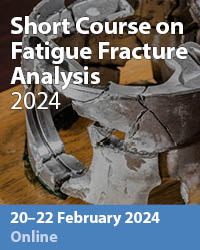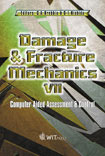Damage Mechanics Applied To The Fatigue Behaviour Of A Composite Material
Price
Free (open access)
Transaction
Volume
37
Pages
Published
2002
Size
286 kb
Paper DOI
10.2495/DM020391
Copyright
WIT Press
Author(s)
A Plumtree
Abstract
Stress controlled fatigue tests were carried out on glass-polyester pultruded rods and damage evolution was monitored continuously using stiffness decay and replication techniques. Two distinct stages of damage development were identified. During Stage 1, an initially high but gradually decreasing rate of damage development took place, due to the exhaustion of new damage sites and slow growth of existing ones. The new sites were exhausted by about 10% life and the corresponding damage level was stress dependent. Stage 2 exhibited a steady increase or accelerating damage rate. During this stage, crack coalescence, longitudinal splitting and fibre fracture occurred. A continuum damage mechanics model was developed which described damage evolution during the two distinct stages for all stress levels. Accurate fatigue lives were predicted. This model was capable of expressing the cyclic damage behaviour during a two stress level block test. 1 Introduction In polymer matrix composites the main damage mechanisms are matrix cracking, interfacial debonding, delamination and fibre breakage. These occur in two dominant stages [1]. The first consists of homogeneous non-interactive cracking, restricted to individual plies that develops at a decreasing rate due to exhaustion of new damage sites and the slow growth of existing ones. The second stage is characterized by the localization of damage in zones of increasing crack interaction. In uni-directional composites this is seen as crack coalescence and in laminates as delamination. This leads to a steady increase or an acceleration in damage evolution until fracture takes place. The proportion and amount of
Keywords





